
ARC-Grain Crops,
Potchefstroom
 Desmond Nkoko,
Desmond Nkoko, ARC-Grain Crops,
Potchefstroom
Sorghum, an important cereal crop in Africa and a staple grain for millions of people, is used to make bread, porridges, soups and cakes for human consumption. It is also used as fodder for cattle and poultry feed as well as for malt in the production of not only alcoholic beverages such as opaque beer and traditional sorghum beer (umqombothi) but also non-alcoholic drinks (mageu) in South Africa.
This cereal crop is well adapted to arid and semi-arid environments. It has the ability to grow under low soil fertility, low rainfall (300 mm to 700 mm/season) and high temperature conditions (31°C to 32°C)
– where other cereal crops often fail to thrive.
Despite this resilience, there are grain yield losses owing to biotic factors such as foliar diseases and grain mould, especially in improved short to medium sorghum cultivars grown in humid, tropical and subtropical climates. Leaf diseases of concern for sorghum production in South Africa are turcicum leaf blight caused by Exserohilum turcicum (Photo 1) and anthracnose leaf blight caused by Colletotrichum sublineola (Photo 2). Grain mould (caused by a complex of fungal pathogens) and sorghum ergot (Claviceps africana) (Photo 3) reduce grain quality, particularly in late sorghum plantings. For example, sorghum planted in December tend to have high levels of ergot infections.
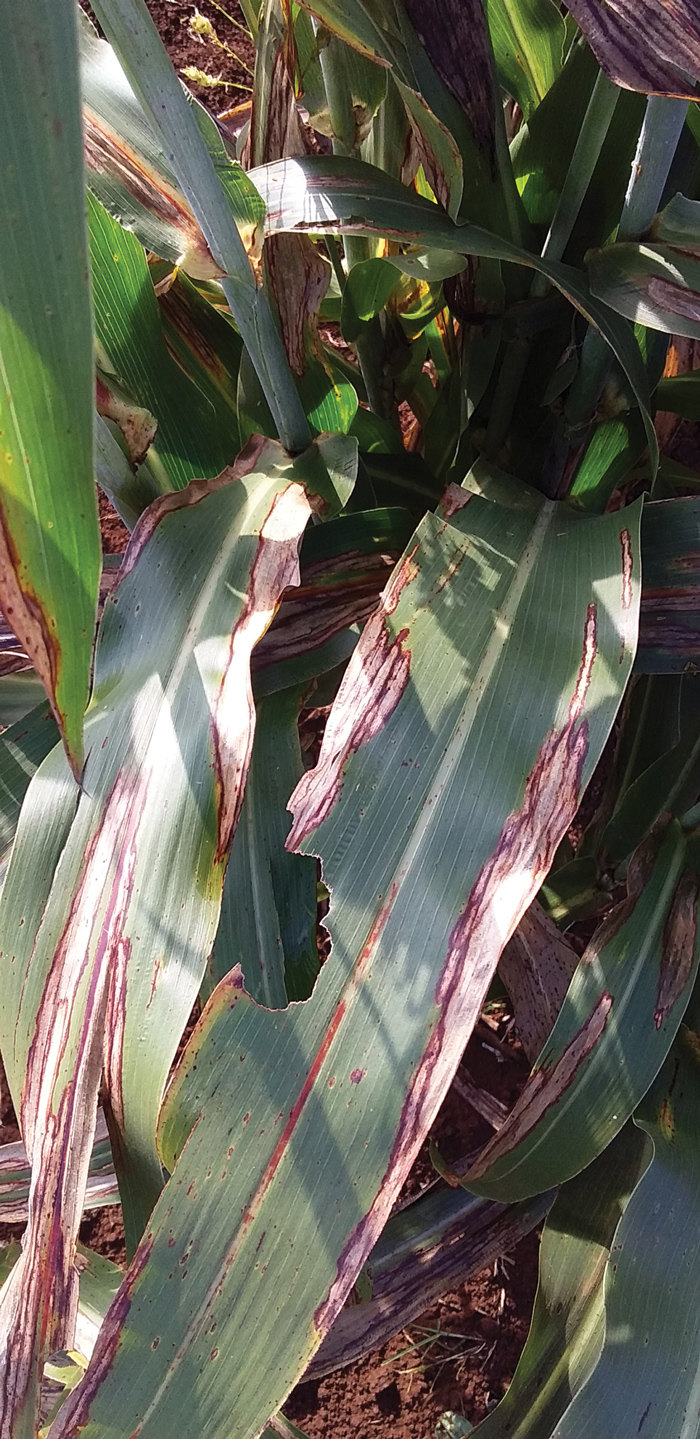
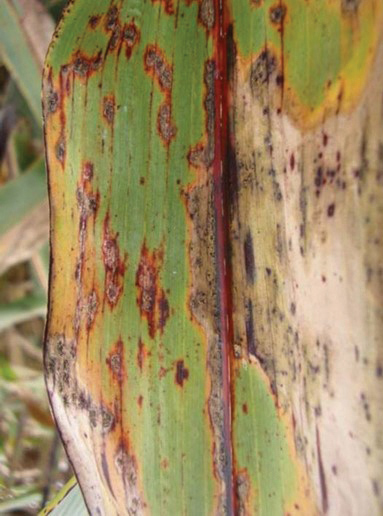
Source: NW McLaren
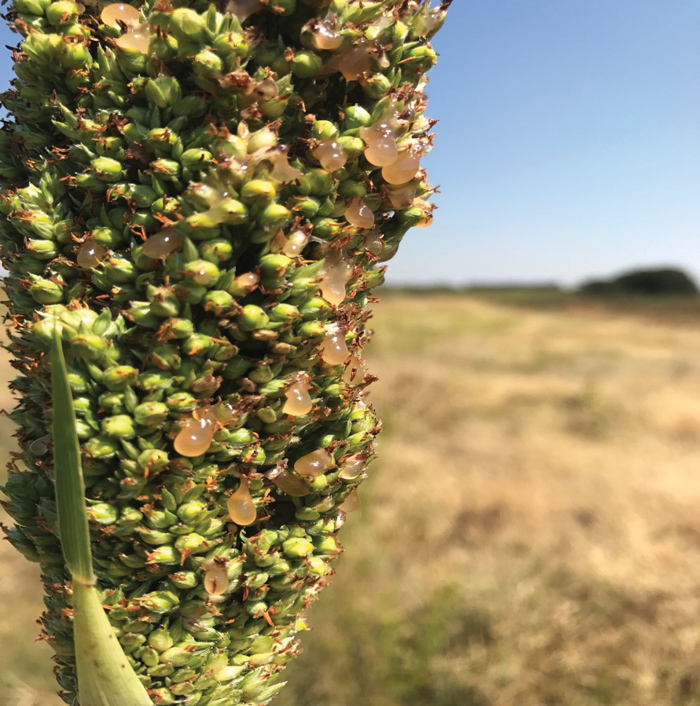
The performance of newly released commercial sorghum hybrids is a concern and international research has estimated that annual yield losses due to biotic and abiotic factors can exceed 50% of the total harvest. To improve sorghum yield and the adoption of newly released hybrids by producers, it is important to investigate production constraints under farming conditions in South Africa. For instance, sorghum seed is imported into the local market from the United States of America and Australia. This article reports on twelve commercial grain sorghum cultivars that were evaluated for grain yield and the effect of a broad-spectrum strobilurin and triazole fungicide application on leaf diseases at Potchefstroom and Cedara during the 2020/2021 season.
Cultivar evaluation
Two field trials were planted at ARC-Grain Crops at Potchefstroom and Cedara during November 2020 and harvested in June 2021. Twelve cultivars, namely PAN 8945, PAN 8816, PAN 8625, PAN 8944, NS 5511, Bullet, Avenger, Enforcer, PAN 8706, Titan, Mr Buster and Swift were evaluated at each locality in a split-plot design with two treatments: fungicide-treated plants (Amistar® Top) and non-treated plants with three replicates per treatment.
The rows were 8 m long with approximately 80 plants in each row and an inter-row spacing of 1,2 m. Amistar Top, a broad-spectrum strobilurin and triazole fungicide, was applied as recommended at 60 days after planting at Potchefstroom and Cedara. Panicles were covered with aerated mono bags at the milk stage to prevent bird damage. Trials were harvested at physiological maturity, moisture levels determined and grain threshed and weighed. Grain yield and leaf blight data were subjected to ANOVA using Genstat® 19th Edition.
Grain yield and leaf blight results
Yield: Potchefstroom versus Cedara – non-sprayed trial
Cultivars PAN 8945 and Avenger significantly yielded more grain in Cedara compared to Potchefstroom. Conversely, PAN 8625 and Mr Buster yielded significantly more in Potchefstroom than in Cedara. It should be noted that Bullet, PAN 8706 and Mr Buster did not germinate in Cedara. There were no significant differences between both localities for cultivars PAN 8816, PAN 8944, NS 5511, Enforcer, Titan and Swift. Moreover, NS 5511 was a high-yielding cultivar at both localities (Graph 1).
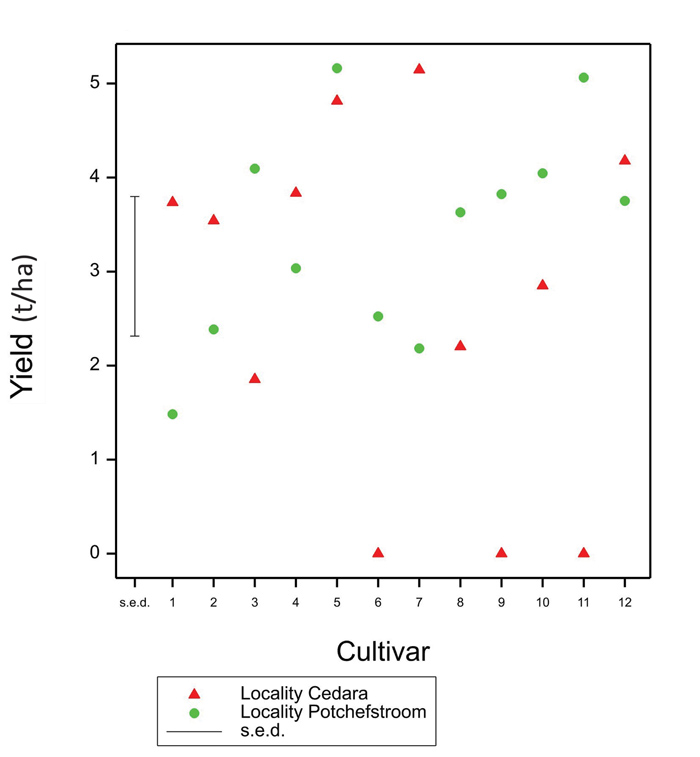
Cultivars: 1 = PAN 8945, 2 = PAN 8816, 3 = PAN 8625, 4 = PAN 8944, 5 = NS 5511, 6 = Bullet, 7 = Avenger, 8 = Enforcer, 9 = PAN 8706, 10 = Titan, 11 = Mr Buster, 12 = Swift
Yield: Potchefstroom versus Cedara – sprayed trial
PAN 8625 and NS 5511 yielded significantly more grain in Cedara and they were also high-yielding cultivars at Cedara. However, PAN 8625 had germination problems at Potchefstroom. Moreover, cultivars Bullet, PAN 8706 and Mr Buster also did not germinate at Cedara. PAN 8944 marginally performed better at Potchefstroom. There were no significant differences between both localities for PAN 8945, PAN 8816, Avenger, Enforcer, Titan and Swift (Graph 2).
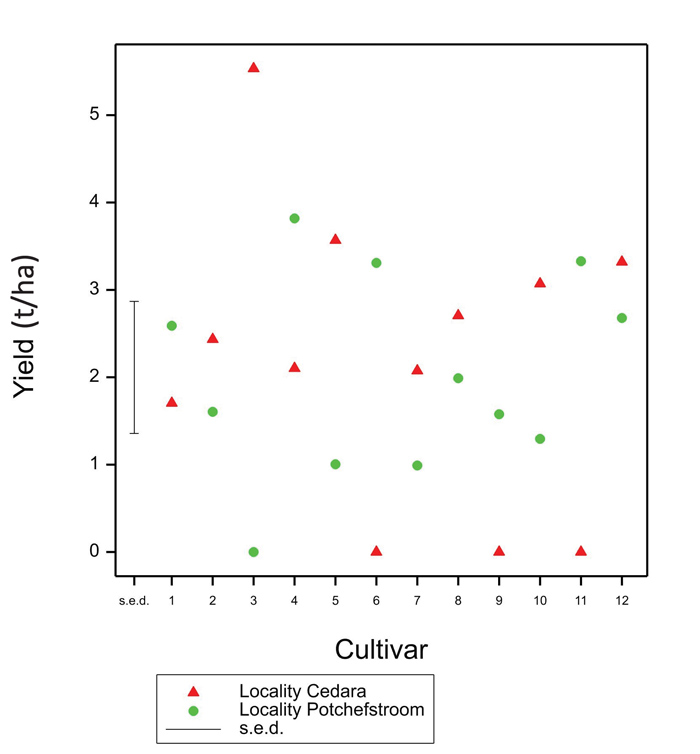
Cultivars: 1 = PAN 8945, 2 = PAN 8816, 3 = PAN 8625, 4 = PAN 8944, 5 = NS 5511, 6 = Bullet, 7 = Avenger, 8 = Enforcer, 9 = PAN 8706, 10 = Titan, 11 = Mr Buster, 12 = Swift
Yield: Potchefstroom (non-sprayed versus sprayed) trial
The non-sprayed cultivar PAN 8945 significantly yielded more grain than the sprayed treatment – possibly due to other biotic factors such as sporadic damage by stem borers. Mr Buster responded well to fungicide treatment and it yielded significantly more grain compared to the non-sprayed treatment. Cultivar PAN 8625 also had germination problems. There were no significant differences between treatments for PAN 8816, PAN 8944, NS 5511, Bullet, Avenger, Enforcer, PAN 8706, Titan and Swift, indicating that fungicide spray is of no economic benefit in these cultivars under environmental conditions obtained in Potchefstroom (Graph 3).
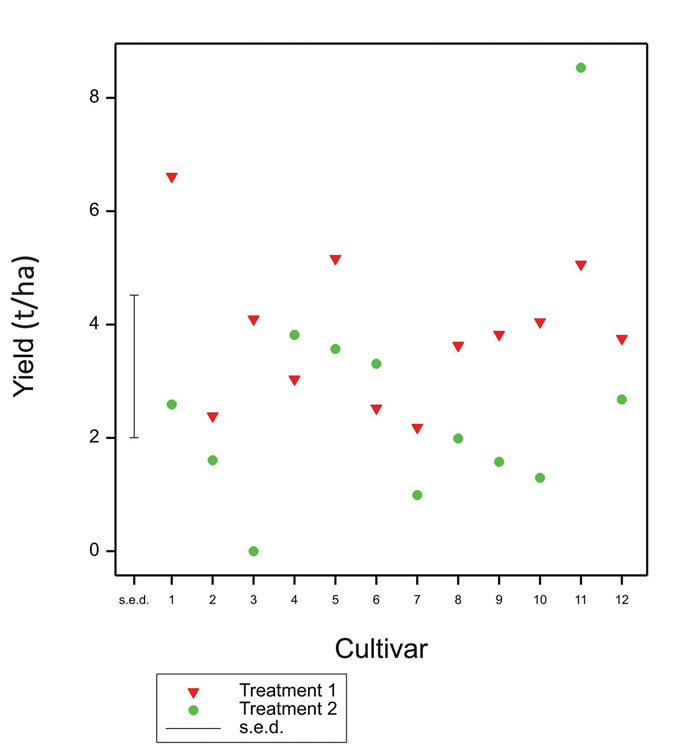
Cultivars: 1 = PAN 8945, 2 = PAN 8816, 3 = PAN 8625, 4 = PAN 8944, 5 = NS 5511, 6 = Bullet, 7 = Avenger, 8 = Enforcer, 9 = PAN 8706, 10 = Titan, 11 = Mr Buster, 12 = Swift
Treatment 1 = non-sprayed; Treatment 2 = sprayed
Yield: Cedara (non-sprayed versus sprayed) trial
Cultivar PAN 8816 had no germination for the sprayed trial. PAN 8625 responded to fungicide treatment with the sprayed treatment yielding significant more than the non-sprayed. However, for PAN 8944, Avenger and Enforcer, the non-sprayed treatment yielded significantly more than the sprayed treatment. This could be due to other biotic factors such as virus infections that were observed at Cedara on this trial. There were no significant differences between treatments for PAN 8945, NS 5511, Titan and Swift, thereby indicating that fungicide sprays should be applied cautiously in these cultivars (Graph 4).
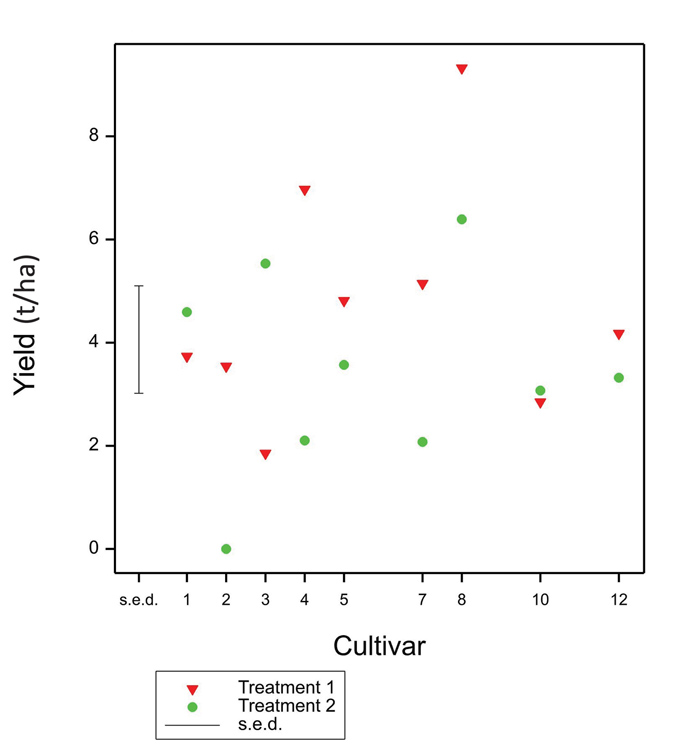
Cultivars: 1 = PAN 8945, 2 = PAN 8816, 3 = PAN 8625, 4 = PAN 8944, 5 = NS 5511, 6 = Bullet, 7 = Avenger, 8 = Enforcer, 9 = PAN 8706, 10 = Titan, 11 = Mr Buster, 12 = Swift
Treatment 1 = non-sprayed; Treatment 2 = sprayed
Leaf blight: Potchefstroom versus Cedara – non-sprayed trial
Leaf blight was not visible at Potchefstroom. However, it was more pronounced at Cedara where anthracnose leaf blight was prevalent during the soft dough stage, possibly due to high rainfall during the season. PAN 8816, PAN 8625, PAN 8944, NS 5511 and Avenger had significantly more leaf blight symptoms at Cedara compared to Potchefstroom. There was, however, no significant difference in leaf blight between the two localities for cultivars PAN8945, Bullet, Enforcer, Titan and Swift (Graph 5).
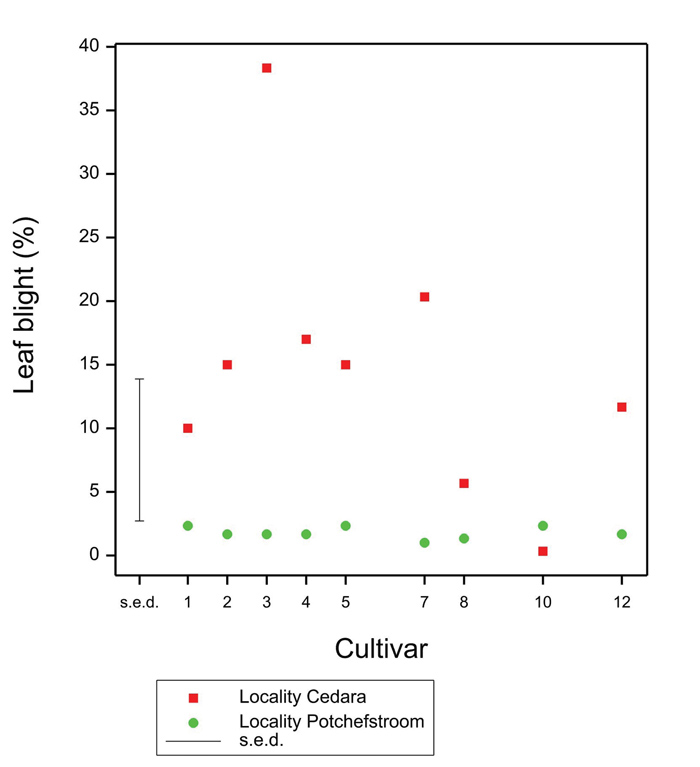
Cultivars: 1 = PAN 8945, 2 = PAN 8816, 3 = PAN 8625, 4 = PAN 8944, 5 = NS 5511, 6 = Bullet, 7 = Avenger, 8 = Enforcer, 9 = PAN 8706, 10 = Titan, 11 = Mr Buster, 12 = Swift
Leaf blight: Potchefstroom versus Cedara – sprayed trial
Only cultivars PAN 8625 and NS 5511 had significantly high leaf blight symptoms at Cedara compared to Potchefstroom despite fungicide treatments. This indicates that these cultivars are highly vulnerable to anthracnose leaf blight. No significant differences were noted between the localities for PAN 8945, PAN 8816, PAN 8944, Bullet, Avenger, Enforcer, Titan and Swift (Graph 6).
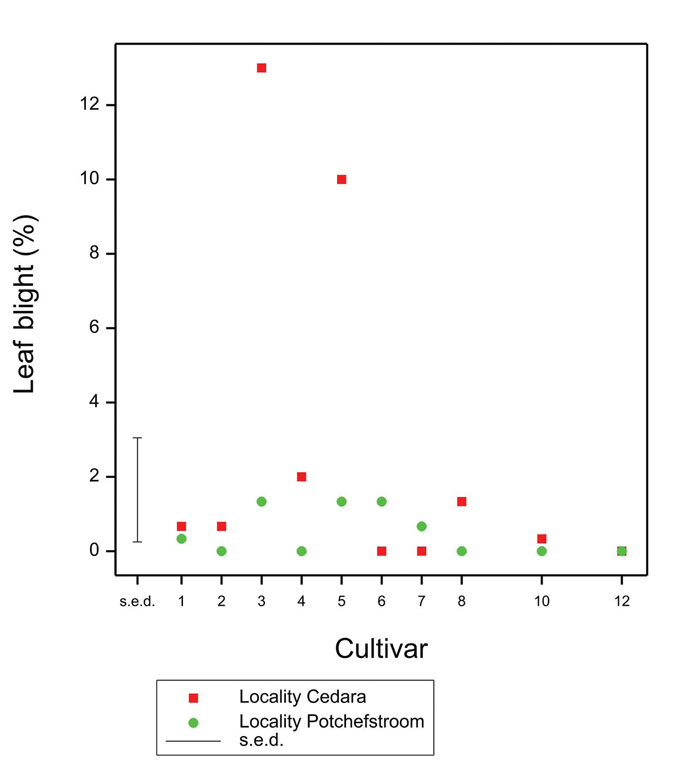
Cultivars: 1 = PAN 8945, 2 = PAN 8816, 3 = PAN 8625, 4 = PAN 8944, 5 = NS 5511, 6 = Bullet, 7 =Avenger, 8 = Enforcer, 9 = PAN 8706, 10 = Titan, 11 = Mr Buster, 12 = Swift
Leaf blight: Cedara (non-sprayed versus sprayed) trial
PAN 8816, PAN 8625, PAN 8944, Avenger and Swift responded to fungicide treatment, resulting in significantly more leaf blight in the non-sprayed treatment when compared to the sprayed treatment. There were no significant differences for PAN 8945, NS 5511, Bullet, Enforcer and Titan, indicating that fungicide treatment should be applied when there is a need to do so upon visual inspection of the field. This can be accomplished by scouting the field for disease symptoms before deciding on fungicide application (Graph 7).
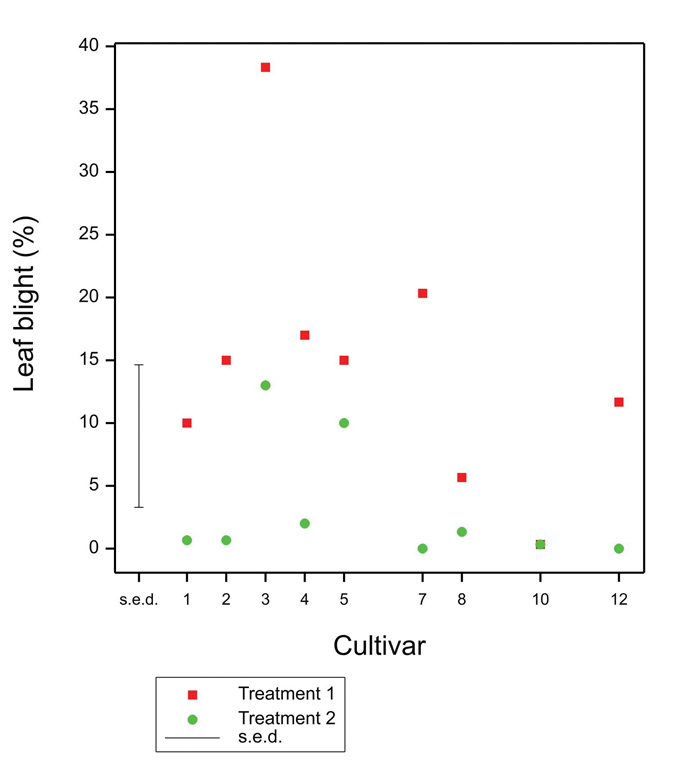
Cultivars: 1 = PAN 8945, 2 = PAN 8816, 3 = PAN 8625, 4 = PAN 8944, 5 = NS 5511, 6 = Bullet, 7 = Avenger, 8 = Enforcer, 9 = PAN 8706, 10 = Titan, 11 = Mr Buster, 12 = Swift
Treatment 1 = non-sprayed; Treatment 2 = sprayed
Conclusion
These evaluation trials indicate that sorghum diseases vary seasonally due to the genotype x environment interactions at different localities. For example, leaf blight caused by Exserohilum turcicum is usually the predominant disease at Cedara. However, during the 2020/2021 season, anthracnose leaf blight was the predominant disease, possibly due to high rainfall during this season. It is thus important that cultivar evaluation be conducted seasonally at different localities in order to provide producers with information that can help them to make informed decisions on cultivar selection and fungicide applications every season.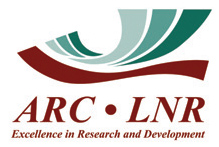
Please note that this information is presented in good faith and the ARC does not accept any legal liability for it. As conditions may vary from farm to farm and even from land to land within each area, adjustments may be necessary based on local conditions. For further information, contact Dr Edson Ncube and Desmond Nkoko at 018 299 6374 or ncubee@arc.agric.za.





























